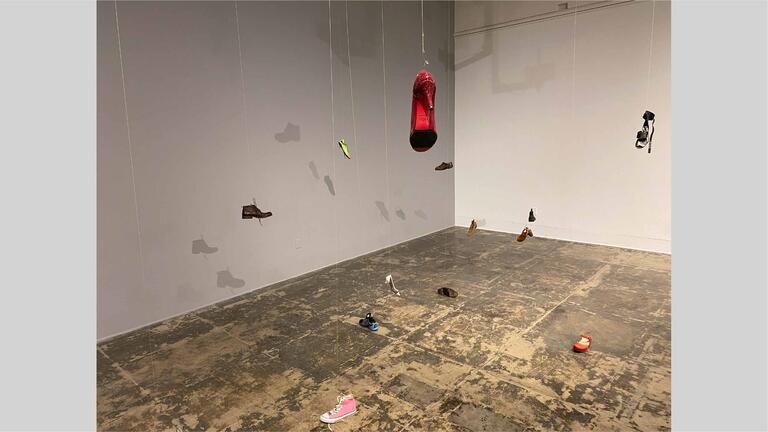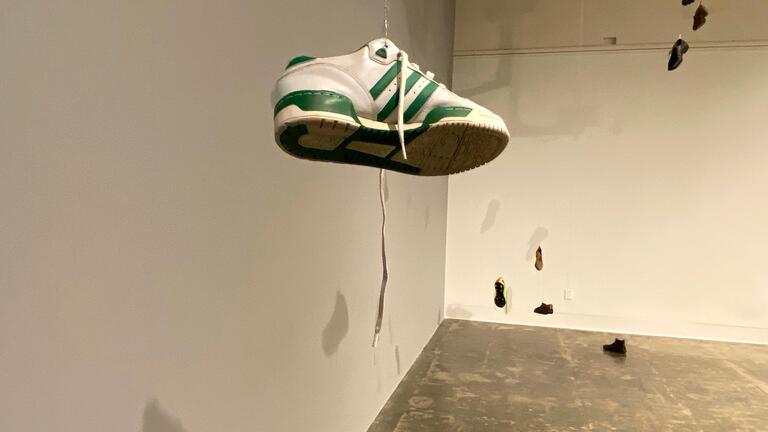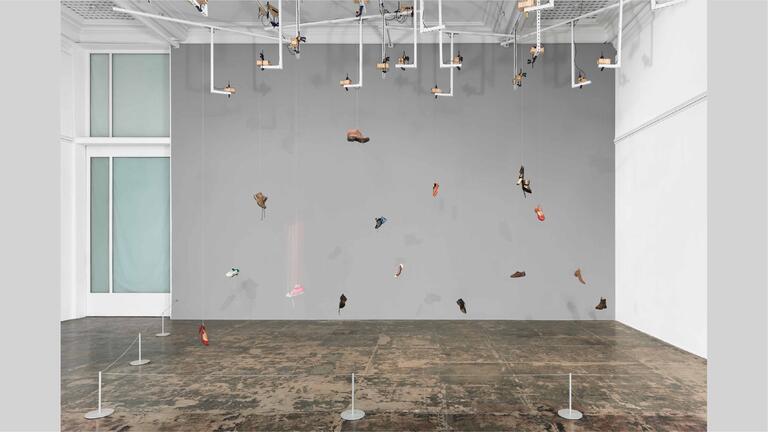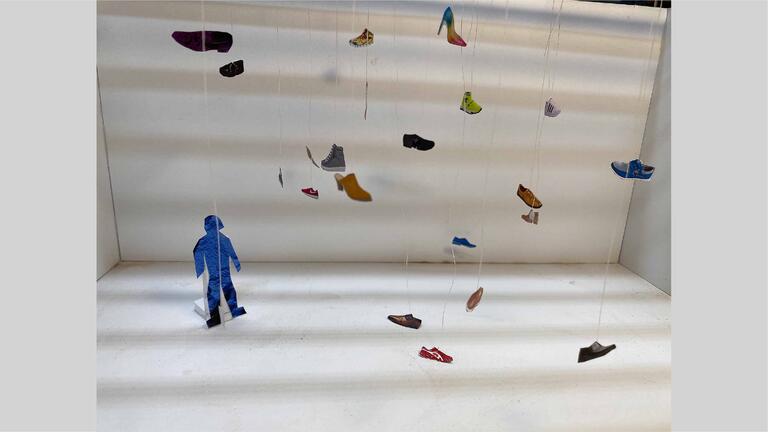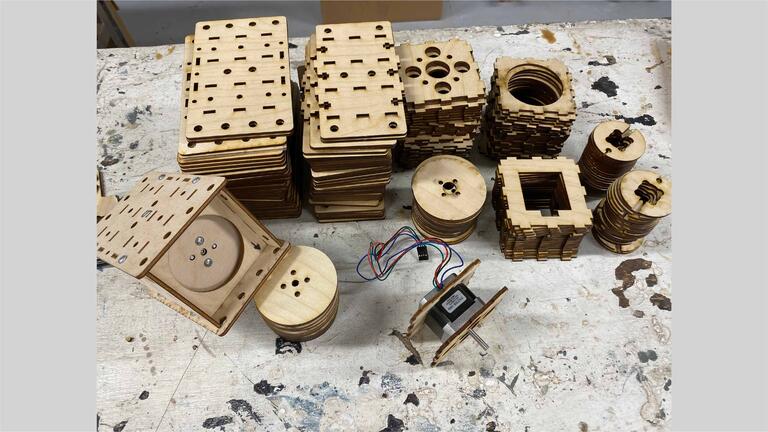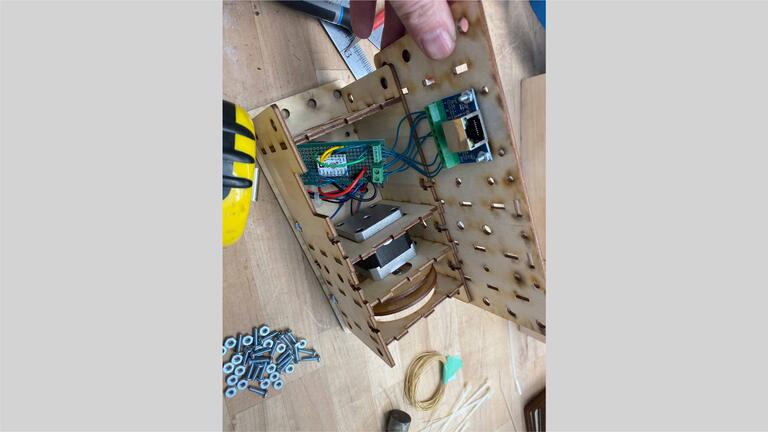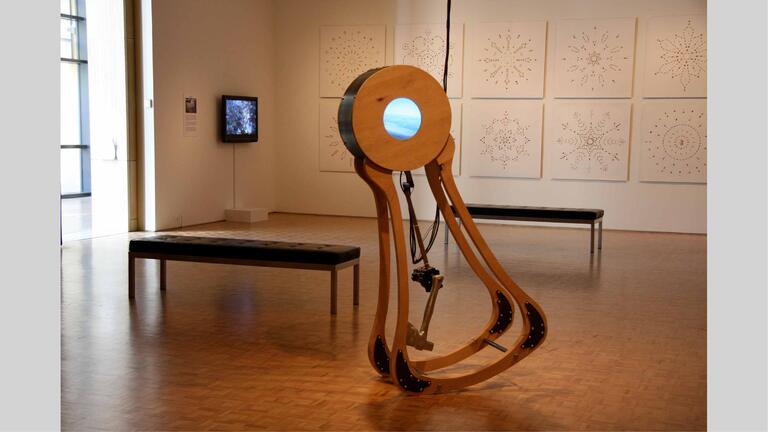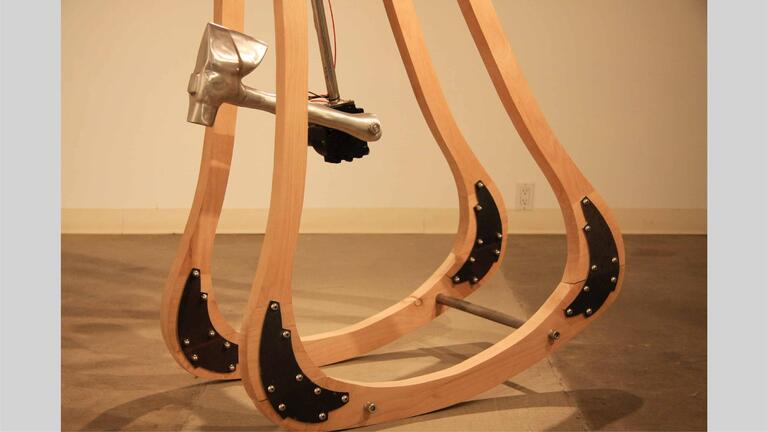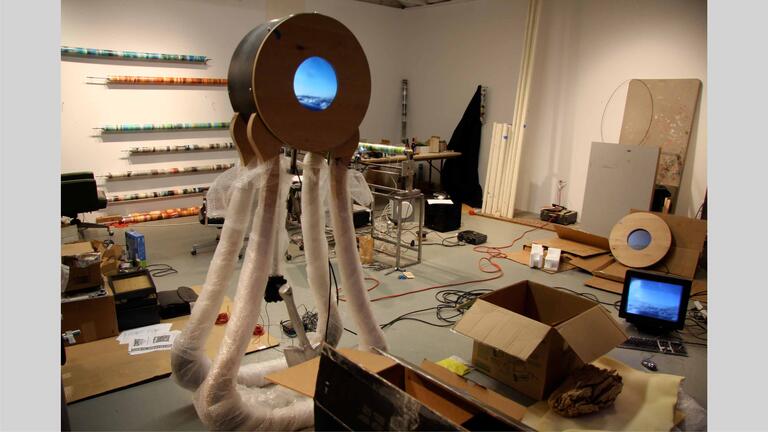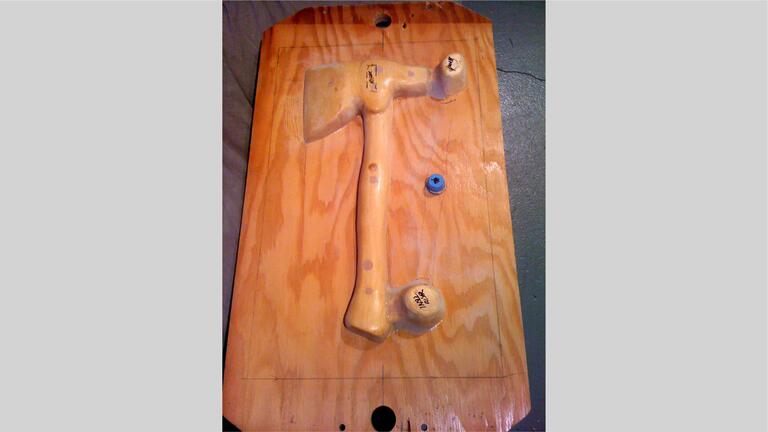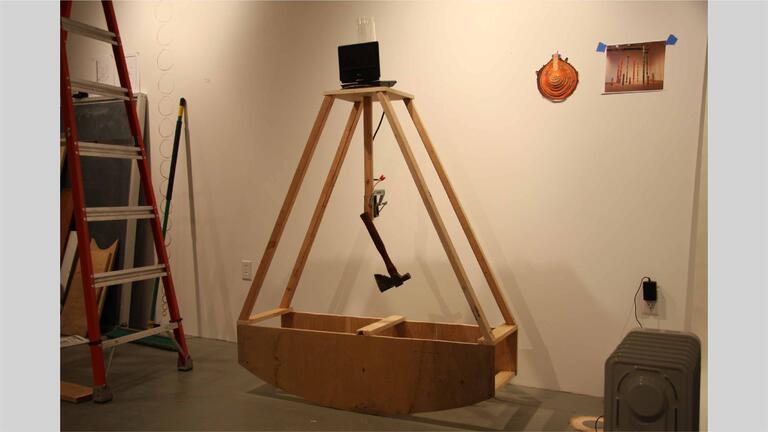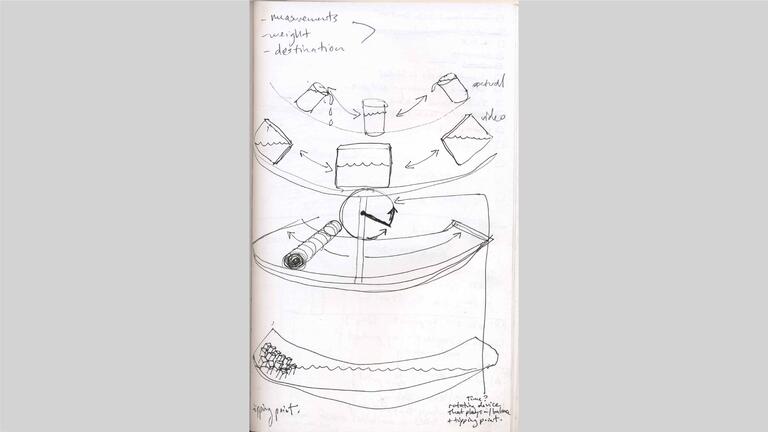Terry Berlier
Can the awareness of collapse pull us out of our collective trance of individualism?
Artist Statement
In my practice, I interweave movement and sound to investigate the evolution of human connections with queerness and ecologies. This results in kinetic and sound-based sculptures and multimedia installations that work as metaphors for both harmonious and dissonant interactions. Emphasizing the essential roles played by cultural memories and environmental conditions in the creation of our identities, I excavate material objects to challenge our understanding of progress and reveal how history is constructed within a cultural landscape. Orienting, disorienting, and reorienting, my work provides tools to recover and reanimate our faltering connections with self, queerness, nature, and society, often through humor. My collaborators include engineers, composers, architects, and natural scientists.
“Our country moving closer to its own truth and dread, its own ways of making people disappear.” — Adrienne Rich
Here, I have continued ongoing threads in kinetic and sound sculpture with humor and political critique, using the common American saying “waiting for the other shoe to drop” (referring to a sense of impending doom) as my departure point. The movement is controlled by an Arduino and a series of twenty mechanical motor and pulley systems. Shown in early 2020, the exhibition closed two weeks early and remained inaccessible for six months due to another shoe dropping — a worldwide pandemic and Stanford’s campus lockdown. The shoes originally referenced global political and social instability leading to mass migration, environmental decline, and the persistent stripping away of human rights for BIPOC, queer, and trans individuals — all tragically highlighted as COVID-19 ran unbound on the world.
Project Team:
20+ networked and programmed motor units, developed code, electronics, built, and tested the units: Eric Rawn
Motor system: Tom Trzpit
Engineering Insight
Terry Berlier’s work first struck me as beautiful examples of combining art, physics, and engineering. Beyond being visually striking, her art provides inspiration for an engineer’s work. She focuses on collapse within our world — climate change in “Tipping Point” and the general idea of collapse in “Waiting for the Other Shoe to...” — and comments on our wastefulness by using reclaimed materials. Exposing these issues through art provides a new means of motivating all of us, engineers included, to try and prevent these collapses from happening. The solutions to these problems will undoubtedly be complex and will only be accomplished through interdisciplinary collaboration. We are reminded of this key fact when we realize that Terry’s thought-provoking art is also the result of collaboration between seemingly disparate areas including sculpture and computer programming.
As I looked past the big concepts of her work I began to see more subtle lessons and was drawn in further. A key mantra to my teaching is “learn to be comfortable being uncomfortable.” Rarely do impactful ideas/inventions come from a place of comfort. They come from pushing oneself in directions that are new and unexplored and therefore, associated with a sense of discomfort. There is an uneasy feeling that comes with viewing Terry’s art. Whether it’s the fear of the “Tipping Point” going too far, the anticipation as you “Wait for the other shoe to…,” or the confusion of watching wheels move without making progress as in “Third Wheel,” there is a sense of disquietude. I can’t help but feel that through her art, Terry is teaching all of us to embrace discomfort. Her brilliant and playful weaving of art, technology, social commentary, and dissonance can educate and inspire all of us if we let it.
—GENNIFER SMITH, PH.D., PROFESSOR, DEPARTMENT OF ENGINEERING
In order to capture the moment of catastrophe, the human-made “tipping point,” this work creates an uncomfortable situation where the sculpture appears to almost fall over. I used MAX programming and a Wii remote’s potentiometer to keep the video water level while the sculpture rocks back and forth with the axe's counterbalancing force. Here, symbols of technical progress are also emblematic of environmental decline.
MAX programming: Ricardo Rivera
Three vintage wagon wheels are rendered stationary while two kinetic movements perform. The Cardan Gear is a 16th century invention used to convert rotation motion to reciprocating linear motion without using linkages or slideways, while the four bar linkage on the opposite side draws an infinity symbol. This sculpture alludes to the felt sense of exclusion in intimate groupings, when you recognize that you are not moving in the same ways despite being closely connected.
Artist Biography
Terry Berlier is an interdisciplinary artist who investigates the evolution of human interaction with queerness and ecologies. She has exhibited in solo and group shows in North America, Europe, Asia, South America, and Australia including at the Yerba Buena Center for the Arts, The Contemporary Jewish Museum in San Francisco, and Contemporary Art and Spirits in Osaka, Japan. Berlier is an Associate Professor and Director of the Sculpture Lab in the Department of Art and Art History at Stanford University.
